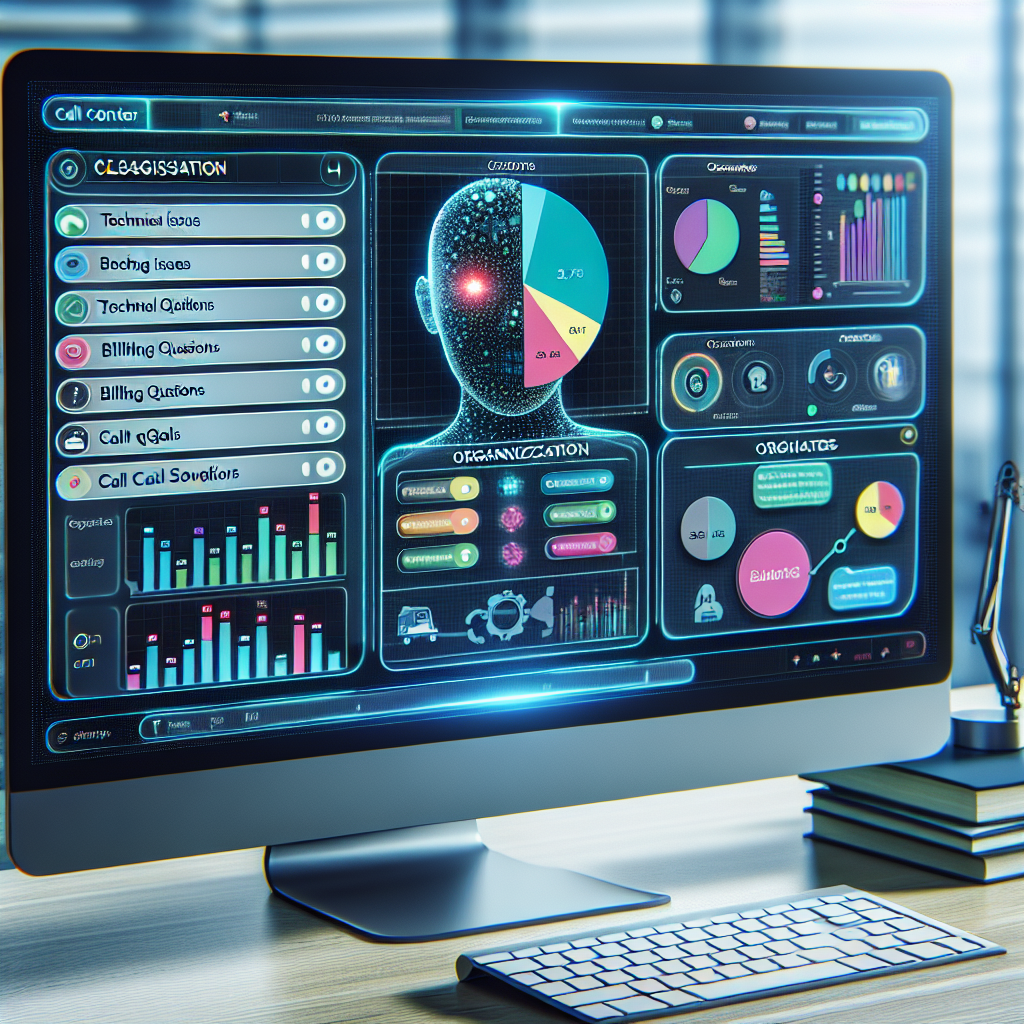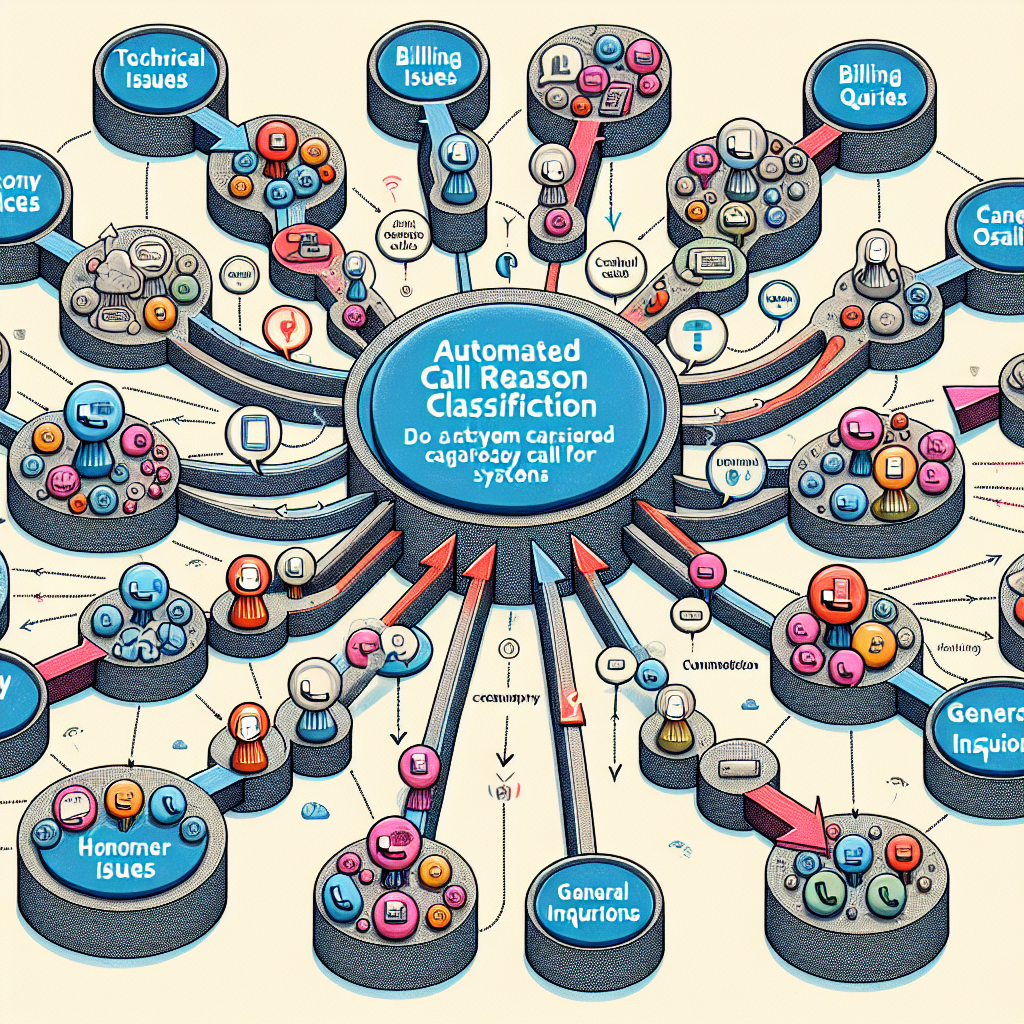
In the fast-paced world of customer service, effective communication is crucial. One aspect of this is understanding the underlying issues that prompts customers to reach out. This need has given rise to a smart solution known as Call Reason Classification. Using artificial intelligence and machine learning, it automatically categorizes the reasons for customer calls, thereby ensuring faster and more accurate service delivery.
An innovative advancement in the realm of customer support and communication, automated Call Reason Classification is a game changer. Evolving call centers utilize this technology to afford their agents more time by instantly identifying the specific reason a customer makes a call. The system applies natural language processing to ascertain the purpose of the call and directs it to the most suitable agent or department.

The powerful advantage of using automated Call Reason Classification lies in its efficiency and accuracy. Instead of relying on manual input, this system quickly identifies the customer's concern, reducing hold times and improving resolution rates. Consequently, this directly affects customer satisfaction and brand loyalty.
In the modern world, there is a constant drive to find ways to automate processes and improve operational efficiency. Call Reason Classification is the touchstone of this transformation in the customer service industry. Its implementation is a considerable step towards providing a dynamic, real-time, and effective customer service experience.
The realm of customer service has been transformed with the advent of automated Call Reason Classification tools. This innovation, powered by Artificial Intelligence (AI), improves the categorization of service calls, leading to enhanced customer experiences and streamlined operations.
AI in call classification utilizes cutting-edge technologies like Natural Language Processing (NLP) and Machine Learning (ML) algorithms. Its sophistication lies in understanding, interpreting, and classifying incoming customer calls based on their intent, issue, or the type of service they require.
Natural language processing sits at the heart of any AI-enabled call classification system. It deciphers the textual data spoken by the customer, allowing the system to comprehend human language in a manner akin to a live agent. NLP uses techniques like tokenization, lemmatization, and sentiment analysis to identify key phrases, understand the meaning, and gauge the emotional tone of the call. As a result, calls can be swiftly routed to the appropriate department or handled by the AI system itself.
However, an NLP system on its own cannot efficiently classify the call reasons. This is where machine learning algorithms come into play. These algorithms learn from existing customer service data, identifying patterns and creating predictive models. Over time, as more data is fed into the system, the ML algorithms improve, refining their classification capabilities. Furthermore, using techniques like supervised learning and unsupervised learning, the system can master the art of correctly categorizing calls even in complex conditions.
Automated Call Reason Classification is a testament to the extraordinary potential of AI in enhancing the customer service landscape. With the fusion of NLP and ML, service companies can gain a competitive edge, delivering efficient and personalized service experiences.
In today's business environment, operational efficiency and customer satisfaction are of paramount importance. With customer service calls mounting by the minute, identifying the reasons for such calls quickly and accurately is a critical task. Enter Automated Call Reason Classification. Leveraging technologies like machine learning and artificial intelligence, this system automates the process of classifying customer calls, thereby improving service categorization dramatically. The advantages of such advancements are endless, ranging from enhanced efficiency to reduced operational costs and improved customer experience.

Firstly, automated classification enhances efficiency. Rather than relying on manual assessments to categorize calls, automated systems can classify calls rapidly and accurately. This speedy categorization enables businesses to address customer needs more promptly, prevent call backlog, and reduce customer wait times. In essence, it drastically boosts operational efficiency. Click here to understand more about how automation enhances efficiency.
Similarly, operational costs can be mitigated significantly through automated systems. By automating call classification, manual labor costs can be reduced significantly. Businesses don't have to bear the burden of expensive overhead costs or constant training of human resources. Not to mention, the chances of human errors are mitigated as well, leading to additional cost savings. For a detailed understanding of cost benefits associated with automation, visit this site.
Finally, customer experience is greatly enhanced. Automated classification ensures that calls get directed to the right departments in a timely manner. Such a seamless experience leads to higher customer satisfaction and, consequently, higher customer retention rates. To learn more about how automation can boost customer satisfaction, click here.
In conclusion, Automated Call Reason Classification is a game-changer in the realm of customer service. By improving service categorization, it aids businesses in not only optimizing their operations but also delivering superior value to their customers.
It's no secret that automated call reason classification has revolutionized the way companies manage their customer service channels. This smart tech tool has successfully streamlined processes, increased efficiency, and improved service categorization in various businesses around the world. Let's take a closer look at two companies whose success stories are testament to the effectiveness of automated call reason classification.
Telecommunications giant, Verizon, is an excellent case study in how using automated call reason classification can significantly improve a company's service categorization. With customer calls hitting the six-figure mark daily, Verizon implemented a system of automated categorization. The result was a significant decrease in call duration times, dramatic efficiency improvement, and an impressive boost in customer satisfaction.
Another successful story is that of Capital One, a leading financial corporation. By integrating automated systems in their call centers, the company achieved a steep decrease in inaccurate call categorizations. This led to a more effective distribution of calls, shorter hold times, and an upswing in overall customer satisfaction rates.
In both these case studies, automated call reasoning classification played a pivotal role in improving the company's service categorization. Not only did it bring a surge of efficiency, but it also paved the way for customer service representatives to focus on higher-value tasks and complex customer queries.
These real-world examples showcase the latent potential of automated call reason classification as a powerful tool. By delivering high value in terms of customer satisfaction and operational efficiency, it's a strategic asset for any thriving customer service department.
Successful integration of modern AI tools into existing systems is often enveloped with challenges, with the area of automated call reason classification being no exception. The benefits, however, from enhanced customer experience to improved operational efficiency, make a compelling case for implementation, despite the hurdles.

One prevalent challenge is the compatibility of systems. Significant differences can exist between the algorithms of a new software and your existing system, making integration complex. (source). Ensuring your AI solution is built on scalable, flexible architectures that can effectively communicate with legacy systems is crucial. Employ the services of integration specialists if necessary to ensure a seamless transition.
Another hurdle involves data inconsistencies. An AI tool fully thrives on accurate, consistent data. Data cleansing and unifying your data schema can aid in overcoming this. (source).
With the advent of stringent data privacy regulations like the GDPR, ensuring your AI tool is compliant would be imperative. Partnering with an AI vendor well versed in data ethics can serve as a preventive measure. Automated call reason classification requires careful handling of personal data, hence, adherence to privacy laws cannot be overemphasized. (source).
As with the implementation of technology, there's always a need for adequate training. Some staff may face a steep learning curve, hence creating a detailed training program tailor-made for various employee levels is recommended. Continuous training and support, as well as fostering a culture open to change, can facilitate effective implementation. (source).
In conclusion, as daunting as they may seem, these hurdles are not insurmountable. With careful planning, collaboration and the right resources, businesses can harness the full potential of automated call reason classification and achieve improved customer service categorisation.
Artificial Intelligence (AI) is a fast-evolving space, constantly fostering innovative solutions for a myriad of industries. One such industry that has greatly benefited from these advancements is customer support. With the advent of technologies like Automated Call Reason Classification, service categorization has undergone a remarkable transformation, enhancing productivity, efficiency, and customer satisfaction on a phenomenal scale.
The future beckons with even more promising developments in the AI technology sphere, especially for customer support. Progressive companies must stay on top of these trends and prepare to leverage them in their operations.
One notable trend will be the further refinement of Automated Call Reason Classification. Primarily, this involves machine learning algorithms capable of interpreting and categorizing calls more accurately and intuitively. These advancements will help businesses streamline their customer care processes, escalating intricate inquiries to relevant human agents only. Thus, businesses can focus their customer support efforts more strategically and efficiently.
Chatbots and voice bots have redefined customer interaction landscapes, owing to their 24/7 availability and prompt responses. The future points to these tools becoming even more intelligent and personalized with context-aware interactions. They will likely be capable of handling multilingual requests, understanding complex queries, and leveraging user data to provide a more tailored customer service experience.
Furthermore, the advent of predictive analytics will enable AI systems to anticipate customer touchpoints, offering data-driven insights to bolster proactive problem-solving. These advancements will help businesses not just react to but also predict and prevent customer issues , massively boosting their service efficiency.
So, how can businesses brace for these upcoming AI trends in customer support? Practically, businesses should invest in AI research and development, keeping a keen eye on these developing trends and actively participating in innovating their proprietary systems accordingly. An open mind to collaborations with AI tech companies will also ensure businesses stay abreast of cutting-edge AI developments.
In conclusion, the future of customer support is steeped in AI technology, and businesses must harness these trends tactically to stay competitive and deliver exemplary service. An innovative mindset, strategic collaborations, and an unwavering commitment to improvement will pave the way forward.
Start your free trial for My AI Front Desk today, it takes minutes to setup!








